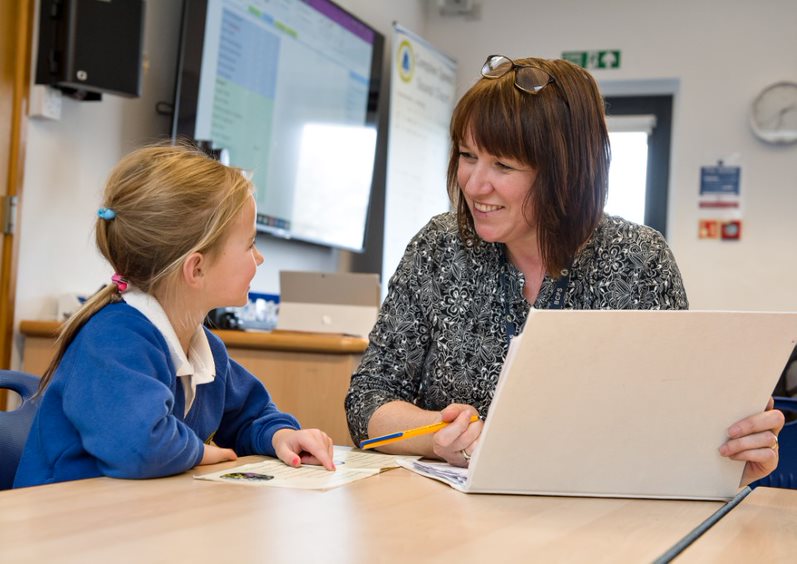Claire Westwood, Children’s Senior Speech and Language Therapist at Sandwell and West Birmingham Hospitals NHS Trust and author of our WellComm Primary Toolkit, discusses why getting to the root of a child’s communication difficulties can radically alter their experience of education and beyond.
Language – an essential skill
Imagine having lots of ideas, but not being able to get the words out to express them in the right way. Or finding it challenging to concentrate on what people are saying to you because you can’t understand all of the words. Or only being able to remember the first or last bit of instructions, while the middle bit whizzes past in a baffling blur.
In the UK, approximately one in 10 children and young people don’t have to imagine what this is like. It’s their everyday reality as they have some form of Speech, Language and Communication Needs (SLCN - Law et al, 2000). Language is such an essential skill – the basis of almost every social interaction – that without a solid grasp, the whole experience of school can be fraught with frustration and anger. For those with communication difficulties, every conversation can be a minefield, with confusing long sentences that are impossible to follow and barely make sense of.
Left behind
As speech and language therapists, we know that children and young people with SLCN can often also have social emotional and mental health difficulties. This can be in the form of either internalising or externalising their vexation at not always being able to understand what is being said to them or expressing what they want to say. The former coping mechanism can lead to frequent bouts of anxiety, and the latter can result in disruptive behaviour in class. As you might expect, both routes lead down a pathway of negative repercussions for education.
While disengagement in education is one thing, it isn’t just the opportunity to learn and reach their potential that is curtailed. A poor grasp of language can deeply affect a child’s ability to form strong and healthy relationships with peers. Consider that, as children progress through primary school, play and peer interaction becomes very highly verbal. Those with communication difficulties can find the rules of games harder and harder to follow, increasing the risk of social isolation as they find themselves at quite a distance from those they’d like to call friends.
Spotting the signs
However, despite the prevalence of these types of communication difficulties, spotting that something out of the ordinary is going on can be very difficult in a class of 30 children. A teacher may notice a child – let’s call him Joe – isn’t integrating well with friendship groups or during team work activities, but there might not be outwardly obvious signs that this is down to a particular speech and language gap. If Joe continually seems to ignore directions, the more obvious conclusions to draw can be that he is misbehaving, just isn’t concentrating or that he is being deliberately defiant.
Adding a further layer of complication is that, in primary school, behaviour recovery work focuses on asking quite complex questions, such as: Why did you do that? How do you think you’re feeling because you’ve done that? What could you do differently next time? The issue here is, if Joe has unidentified communication difficulties, he isn’t going to be equipped to answer these questions. His struggles to adequately say what he feels inside could easily be misconstrued as aggression rather than irritation, which can feed back into a teacher’s reasonable assumption that they are just dealing with a difficult child.
Shining a light
It’s no understatement to say that early identification and intervention of communication difficulties can be life-changing. If nothing is picked up during primary school, these are the children who run the risk of becoming disengaged, excluded and perhaps even becoming involved in the criminal justice system. From that point, research shows that life chances dramatically decrease in terms of employment, relationships and overall happiness.
In the absence of receiving the support a child may desperately need, communication difficulties become a life-long sentence. Approximately 60% of young offenders have communication difficulties (Gregory and Bryan, 2007). This is something I see on a weekly basis in my role at a Youth Offending Team.
During my time working with a primary-age Pupil Referral Unit, it was not uncommon to do a communication assessment and find out that a child’s ability to understand spoken language was three of four years behind their chronological age – shocking when you take into account their age in the first place.
Deeper understanding
Obviously, spotting communication difficulties is a good starting point but currently, even when a teacher becomes aware that there is a barrier, resources to support these children can be at best inequitable and at worst inaccessible.* This is at the crux of why we developed WellComm, a tool that primary schools can use quickly in the event of suspecting a problem. As soon as they had any concerns and without needing to consult an external agency, Joe’s teacher could have done a quick screen to rule in or out speech and language needs.
As there is no statutory requirement to monitor children’s spoken language beyond the age of five, WellComm could also have helped Joe’s teacher subsequently adapt their instructions in the classroom so he could understand more comprehensively. The Big Book of Ideas which comes as standard with the WellComm Primary Toolkit could also have provided insight into simple activities and strategies to immediately support the child at school and at home.
Once their communication needs are met, we’ve seen transformations even in children who have previously been excluded. When they can access the curriculum and communicate with peers and staff, anger, anxiety and/or disruptive behaviour decreases and they can work towards being transferred back into a mainstream school, with the proviso that they need this type of speech and language differentiation to succeed.
So, my advice to teachers? Be overcautious when it comes to checking children’s communication skills – screen the difficulties out, rather than trying to screen them in.
With so much at risk, it’s definitely the best way to go.
*Bercow: 10 Years On www.bercow10yearson.com


